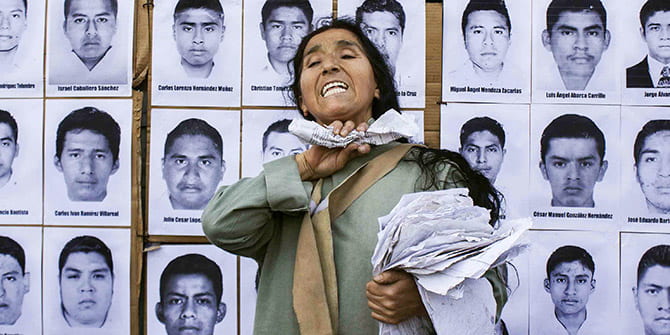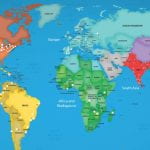Six years after the disappearance of 43 students from Ayotzinapa in Mexico, the Arrupe Human Rights Observatory joins the demand for justice and truth.
The Arrupe Observatory recognizes the struggle of families, civil society organizations, and specific government agencies for the clarification of truth and the pursuit of justice. Also, the Observatory joins the call of many organizations asking the competent authorities to maintain a constant dialogue and listening to the victims and to provide effective justice.
It also invites our Jesuit university community to join the cause by providing financial support to the Centre ProDH, the Jesuit Human Rights Centre in Mexico, to continue providing legal advice and promoting human rights issues in Mexico.
The following is a description of ProDh Center of the events of Ayotzinapa 6 years ago.
On the night of September 26, 2014, a group of students from the Escuela Normal Rural Raúl Isidro Burgos de Ayotzinapa, between 17 and 25 years old, went to the city of Iguala, Guerrero, (Mexico) with the aim of “taking” the buses they needed to participate in the commemoration of October 2, which every year keeps alive in Mexico the memory of that repression against students that took place in 1968. Although the retention and temporary use of buses by students to carry out their activities had been common in Guerrero and even had the tacit approval of companies and authorities, on September 26 the response of the authorities was not the usual one: Municipal Police of Iguala opened fire on the students to prevent them from leaving the city with the buses. Helped by other corporations and civilians, the police managed to close the road to five buses – three that were traveling on a central street and two that were traveling on a peripheral street. In these two scenarios, 43 students were detained and were supposed to be disappeared. Later that night, attacks against the students and the general population continued, not only by state agents but also by civilians who, as was later demonstrated, were part of the structure of a criminal organization strongly linked to the state agencies present in that area of Guerrero, called Guerreros Unidos.
The outcome of the bloody night in Iguala was brutal: 43 young students are still missing; 6 people were executed, among them 3 students, including the case of a young man whose body was found the next day in an uninhabited area with clear signs of torture; at least 40 people were injured, including two students who were seriously and permanently affected by their health. In total, more than 180 people were direct victims of human rights violations that night and about 700 people were indirect victims, considering the relatives of the victims.
In spite of the process of searching for truth and justice initiated by the families of the disappeared and the victims of execution, the obstruction of the investigation by the authorities has prevented the truth of the events that occurred to the normalistas of Ayotzinapa on September 26 and 27, 2014 from being known by the families and by all of society; and therefore, not all of those responsible for these events have been investigated, processed, or sanctioned.
(Find the original version in Spanish)




